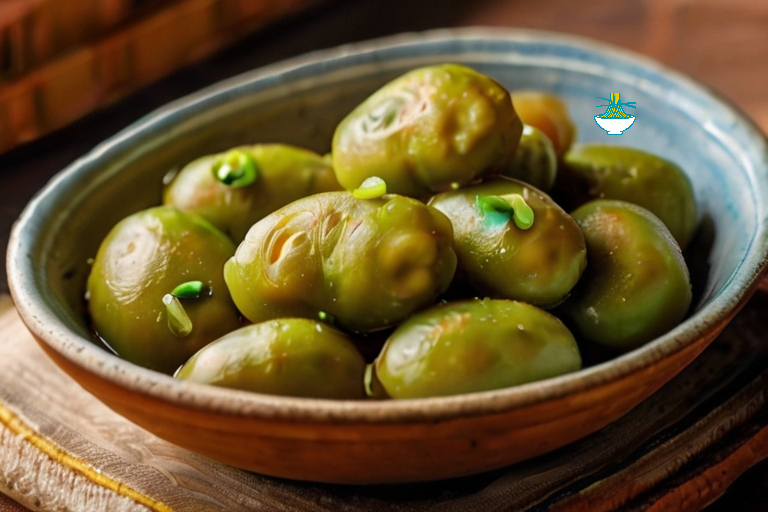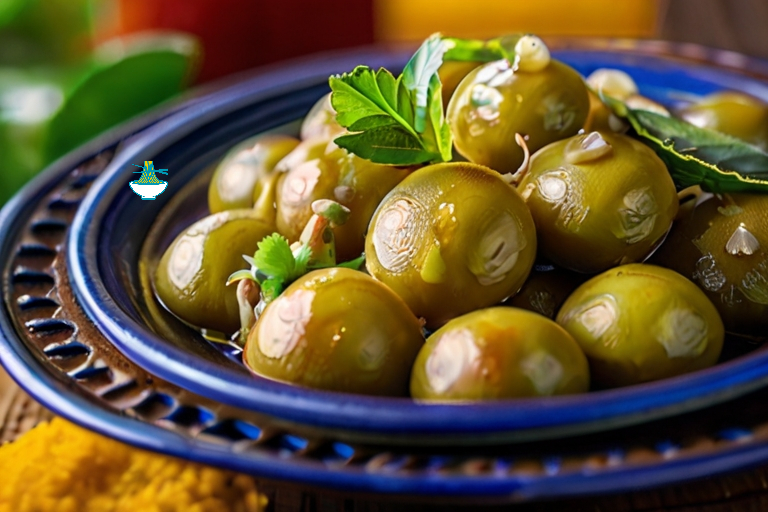Welcome to the flavorful world of Cape Verdean cuisine! Nestled in the heart of the Atlantic Ocean, the islands of Cape Verde boast a rich culinary heritage influenced by African, Portuguese, and Brazilian flavors. Among the many delicious dishes found in Cape Verdean kitchens, Fava stands out as a beloved staple.
Fava, also known as "Bafas" or "Feijoada," is a hearty and comforting stew made from beans, meat, and an array of aromatic spices. This dish holds a special place in Cape Verdean culture, often enjoyed during festive gatherings, family celebrations, and everyday meals alike.
In this recipe, we'll explore the traditional method of preparing Cape Verdean Fava, capturing the essence of its robust flavors and soul-warming appeal. Get ready to embark on a culinary journey to the enchanting islands of Cape Verde as we delve into the art of crafting this beloved dish.
Ingredients:
- 2 cups dried fava beans (or substitute with kidney beans or black-eyed peas)
- 1 onion, diced
- 3 cloves garlic, minced
- 2 tomatoes, diced
- 1 bell pepper, diced
- 2 carrots, diced
- 2 potatoes, diced
- 2 tablespoons olive oil
- 1 teaspoon paprika
- 1 teaspoon ground cumin
- 1 teaspoon ground coriander
- 1 bay leaf
- Salt and pepper to taste
- Fresh cilantro or parsley for garnish (optional)

Instructions:
1- Soak the dried fava beans in water overnight or for at least 8 hours. Drain and rinse them before using.
2- In a large pot, heat the olive oil over medium heat. Add the diced onions and garlic, and sauté until they are soft and translucent, about 5 minutes.
3- Add the diced tomatoes, bell pepper, carrots, and potatoes to the pot. Cook for another 5 minutes, stirring occasionally.
4- Stir in the soaked fava beans, paprika, ground cumin, ground coriander, bay leaf, salt, and pepper. Add enough water to cover all the ingredients in the pot.
5- Bring the mixture to a boil, then reduce the heat to low. Cover the pot and let the fava bean stew simmer for about 1 to 1 1/2 hours, or until the beans and vegetables are tender. Stir occasionally and add more water if necessary to prevent the stew from sticking to the bottom of the pot.
6- Once the fava bean stew is cooked to your desired consistency, taste and adjust the seasoning if needed. Remove the bay leaf.
7- Serve the Cape Verde Fava hot, garnished with fresh cilantro or parsley if desired. Enjoy this hearty and flavorful bean stew with crusty bread or over rice for a complete meal.
This Cape Verdean Fava recipe offers a delicious taste of the islands, combining wholesome ingredients with aromatic spices for a satisfying culinary experience.
flavors and textures.
Nutritional Values:
Here's a breakdown of the approximate nutritional values for the ingredients listed in the Cape Verde Fava recipe:
Dried fava beans (2 cups):
- Calories: 360
- Protein: 26g
- Carbohydrates: 64g
- Fiber: 26g
- Fat: 1g
benefits: Excellent source of protein, fiber, and essential nutrients like folate, manganese, and iron.
Onion (1 medium, diced):
- Calories: 44
- Protein: 1g
- Carbohydrates: 10g
- Fiber: 2g
- Fat: 0g
benefits: Rich in antioxidants, vitamins C and B6, and fiber. Onions also contain compounds that may have anti-inflammatory and antimicrobial properties.
Garlic (3 cloves, minced):
- Calories: 13
- Protein: 0.6g
- Carbohydrates: 3g
- Fiber: 0.2g
- Fat: 0g
benefits: Known for its immune-boosting properties, garlic also contains sulfur compounds that may have various health benefits, including reducing the risk of heart disease and improving cholesterol levels.
Tomatoes (2 medium, diced):
- Calories: 44
- Protein: 2g
- Carbohydrates: 10g
- Fiber: 3g
- Fat: 0g
benefits: Packed with vitamins A, C, and K, as well as potassium and antioxidants like lycopene, which may help reduce the risk of certain diseases and promote heart health.
Bell pepper (1 medium, diced):
- Calories: 25
- Protein: 1g
- Carbohydrates: 6g
- Fiber: 2g
- Fat: 0g
benefits: A good source of vitamins A and C, as well as antioxidants and fiber. Bell peppers may contribute to eye health, immune function, and overall well-being.
Carrots (2 medium, diced):
- Calories: 50
- Protein: 1g
- Carbohydrates: 12g
- Fiber: 4g
- Fat: 0g
benefits: Loaded with beta-carotene, which the body converts into vitamin A. Carrots also contain fiber, vitamins C and K, and potassium, offering benefits for vision, skin health, and immune function.
Potatoes (2 medium, diced):
- Calories: 220
- Protein: 5g
- Carbohydrates: 50g
- Fiber: 6g
- Fat: 0g
benefits: Provide complex carbohydrates for energy, along with vitamins C and B6, potassium, and fiber. Potatoes are also a good source of antioxidants, particularly when consumed with the skin.
Olive oil (2 tablespoons):
- Calories: 240
- Fat: 28g
- No significant protein, carbohydrates, or fiber
benefits: A heart-healthy fat rich in monounsaturated fatty acids and antioxidants. Olive oil may help lower cholesterol levels, reduce inflammation, and protect against heart disease.
Paprika (1 teaspoon):
- Calories: 6
- Protein: 0.3g
- Carbohydrates: 1.3g
- Fiber: 0.7g
- Fat: 0.3g
benefits: Contains vitamins A, E, and B6, as well as antioxidants like capsaicin, which may have anti-inflammatory and pain-relieving effects.
Ground cumin (1 teaspoon):
- Calories: 8
- Protein: 0.4g
- Carbohydrates: 1.3g
- Fiber: 0.2g
- Fat: 0.5g
benefits: Known for its distinct flavor and potential health benefits, cumin is a good source of iron and may aid digestion, improve blood sugar control, and have antimicrobial properties.
Ground coriander (1 teaspoon):
- Calories: 5
- Protein: 0.2g
- Carbohydrates: 1g
- Fiber: 0.4g
- Fat: 0.3g
benefits: Contains antioxidants and may have antimicrobial properties. Coriander is also rich in vitamins and minerals like vitamin C, potassium, and manganese.
Bay leaf (1):
- Negligible caloric value, protein, carbohydrates, fiber, or fat
benefits: While not significantly contributing to nutritional value, bay leaves add flavor and may contain compounds with antimicrobial and anti-inflammatory properties.
Salt, pepper, and fresh cilantro/parsley (amounts used for garnish) contribute minimal calories and nutrients and are typically not significant enough to list.
These values are approximate and can vary based on factors such as the specific variety and size of ingredients used.


Comments